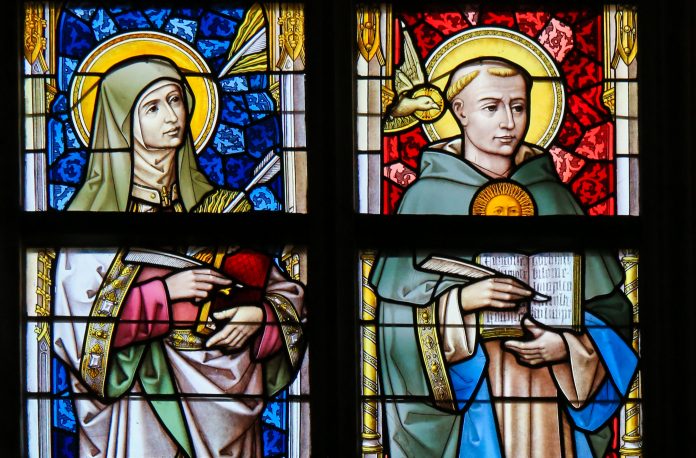
by Lee Danesco
If you ask your students to draw pictures of saints, what will they draw? People wearing serious expressions and medieval robes? Men and women being martyred or ministering to the poor?
While such images are representative of saintly living, they fall short of portraying visions of sainthood that can motivate young people toward more Christ-like living today.
The Present and the Possible
You can help your learners bring sainthood into the realm of the present and the possible by exploring Jesus’ teaching on love found in Matthew 5:43-45: “You have heard that it was said, ‘You shall love your neighbor and hate your enemy.’ I say to you, love your enemies, and pray for those who persecute you, that you may be children of your heavenly Father.”
Jesus tells us that in our relationships with others, we have two clear choices. Write those choices on the board.
Choice #1: Love people who are good to you and hate people who are not.
Choice #2: Love all people, even those who act like enemies.
In a brief discussion, help the class determine which behavior is more likely to lead to sainthood.
The Saints and Jesus’ Teaching on Love
Throughout history the Church has recognized those holy men and women who have made extraordinary efforts to follow Jesus’ call to love all people, even those who may hate them in return. The Church calls these people “saints.”
With your students, list examples of saints from the past. Discuss how these saints tried to love others, even their enemies. Lead students to discover what all saints have in common: They love others. They live out Jesus’ teaching about love.
What Saints Look Like Today
Role playing and reflecting on scenes drawn from their daily lives can help students recognize their own unique opportunities to act like saints by following Jesus’ teaching on love.
Divide the class into small groups and read one of the scene starters below (or create one of your own). Then have each group discuss the question associated with the scene starter to come up with a way to respond to the situation. For contrast, be sure to have at least one group present a response that follows Jesus’ teaching on love (Choice 1) and at least one group present a response that does not follow Jesus’ teaching on love (Choice 2).
Scene Starter 1: You are in line to buy movie tickets. Someone cuts in front of you, buys the last available ticket, and laughs at you and your friends for losing out. How do you respond?
Scene Starter 2: You and your friends are sitting at a school lunch table. An unpopular student walks by, looks at your table as if wanting to join your group, and then trips. How do you and your friends respond?
Scene Starter 3: You and a few of your friends are playing touch football with another group of kids who are friends. The other group starts saying mean and unkind things about your friends and your team. How do you and your friends respond?
Repeat the process for the other scene starters.
For Discussion
Discuss the skits noting:
1. Every day we face the same choices between love and hate that people have faced since the time of Jesus.
2. If responding with love is what marks saintly living, then each time we follow Jesus and chose love over hate, we look like the saints—perhaps for just a brief moment. And the more we respond with love, the more we look like and are like the saints.
Conclude the lesson by praying together that in the week ahead, in every situation, you all may choose to look a little more like saints by responding in ways that follow Jesus’ teaching to love all people.
Lee Danesco holds a Master of Arts degree in teaching from Brown University. She has served as a DRE and a pastoral associate, and is a published author. Her first book, Planning a Youth Service Week, was published by Twenty-third Publications in 2001. The Confident Catechist was published by Saint Mary’s Press in 2007.
Copyright 2010, Bayard, Inc. All rights reserved. This article is protected by United States copyright and other intellectual property laws and may not be reproduced, rewritten, distributed, redisseminated, transmitted, displayed, published or broadcast, directly or indirectly, in any medium without the prior written permission of Bayard, Inc.
This article was written by the Catechist Staff and appeared in Catechist magazine, September 2010.
Image Credit: jorisvo/Shutter Stock 544541167




